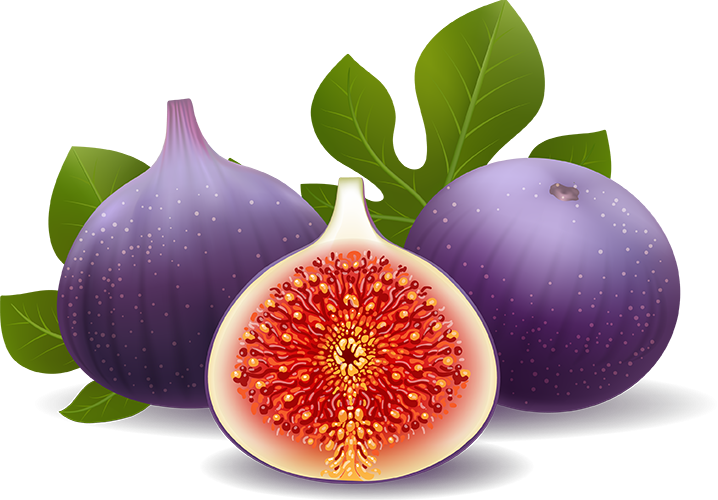The ripening process of figs is unique compared to many other fruits, primarily because figs are not technically fruits but inverted flowers. Understanding this process involves recognizing the distinct stages of development and the changes that occur within the fig.
The entire process from flower development to full ripeness can vary in length depending on the variety of fig and the growing conditions, including climate, soil type, and tree health. Proper care throughout the growing season is essential to ensure a good yield of ripe, sweet figs. Understanding these complex biological processes can aid in better cultivation and harvesting practices, ensuring the production of high-quality, ripe figs.
The specific characteristics of the ripening process can vary among different fig varieties, which is an important consideration for growers and gardeners.
Here’s an overview of the fig ripening process:
Initiation of the Syconium:
The fig’s life cycle begins with the development of the syconium, a specialized structure that encloses the fig’s tiny flowers. This structure is initially small and hard.
Flower Development Inside the Syconium:
Unlike typical fruits, the fig’s edible structure is actually an inverted flower, technically known as a syconium. Inside the syconium, numerous tiny flowers begin to develop. These flowers are unique in that they are not visible externally, as they are enclosed within the syconium.
Pollination Process (Caprification) (In some Varieties):
In certain fig varieties, such as those in the Smyrna group, a specialized pollination process known as caprification is crucial and necessary. This involves a specific fig wasp entering the syconium through a tiny opening (the ostiole) to pollinate the flowers. The wasp carries pollen from a male fig tree (caprifig) to the female flowers inside the syconium of the edible fig varieties.
For many common fig varieties, including those typically found in home gardens, pollination is not necessary for the fruit to ripen.
Development of Seeds and Inner Flesh (Fruit Set):
Following pollination, seeds start to develop within the flowers. Concurrently, the inner flesh of the syconium (known as the mesocarp and endocarp) begins to form and thicken. This tissue will eventually become what we recognize as the flesh of the fig.
In varieties that don’t require pollination, the fruit set occurs without any external intervention.
Hormonal Changes:
The ripening process is regulated by plant hormones like auxins, gibberellins, and ethylene. These hormones coordinate the growth and maturation of the syconium.
Increase in Sugar, Water Content, and Cell Expansion:
As the fig matures, it actively transports sugars and water from the tree into the syconium. This leads to an increase in its overall size and sweetness. The sugars are primarily in the form of glucose and fructose.
Changes in Texture (Softening):
Pectinases and other cell wall-modifying enzymes become active during the ripening process, breaking down cell walls and leading to the characteristic softening of the fig.
Skin Development:
The skin of the fig also undergoes changes, becoming thinner and more delicate as the fruit matures. In some varieties, the skin may crack slightly when fully ripe.
Color Transformation:
The chlorophyll in the skin of the fig breaks down, and anthocyanins and other pigments develop, leading to the color change that is a hallmark of ripening in many fruits, including figs. This can vary depending on the variety, ranging from green to purple, brown, or even black.
Increase in Size:
Along with softening, the fig also increases in size as it ripens. This is often accompanied by a slight drooping on the tree due to the increase in weight.
Flavor and Aroma Development:
Volatile organic compounds responsible for flavor and aroma are synthesized during the later stages of ripening. These compounds give ripe figs their distinctive and appealing taste and smell.
Ethylene Production and Sensitivity:
Ethylene, a ripening hormone, plays a crucial role in coordinating these changes. Some fig varieties produce more ethylene than others, affecting the speed and uniformity of ripening.
Respiratory Changes:
The metabolic activity within the fig increases during ripening, which is reflected in a higher respiratory rate. This increased respiration is part of the process of converting stored nutrients into the sugars that sweeten the fruit.
Water Balance Regulation:
Proper water balance is crucial for the fig’s development. Too much water can dilute the sugars and affect the texture, while too little can hinder growth and ripening.
Sugar Consent Peaks:
As the ripening process nears completion, the sugar content in the fig reaches its peak, leading to the sweet flavor characteristic of ripe figs.
Final Maturation and Harvest Readiness:
The culmination of these processes results in a fig that becomes fully colored, is soft, sweet, aromatic, and ready for harvest. The timing of harvest is critical. Unlike many fruits, figs do not continue to ripen once picked, so it’s important to harvest them when they reach this stage of full ripeness.

